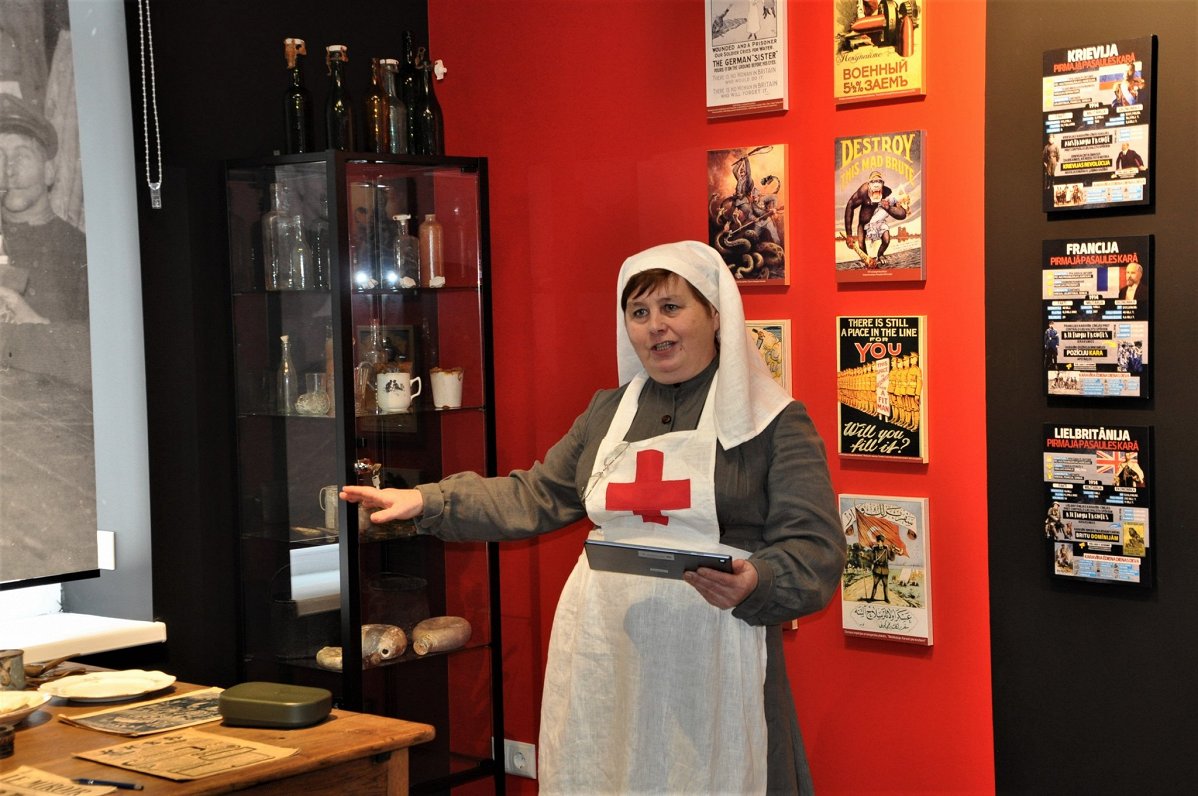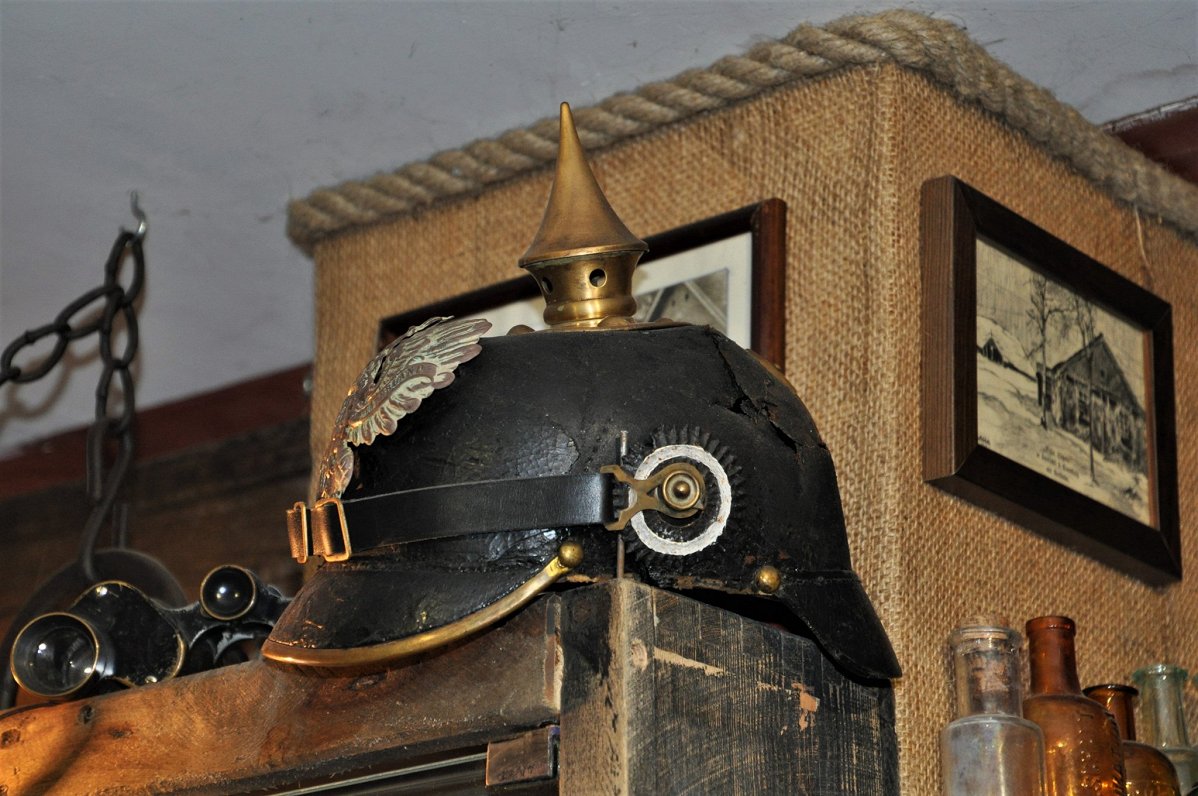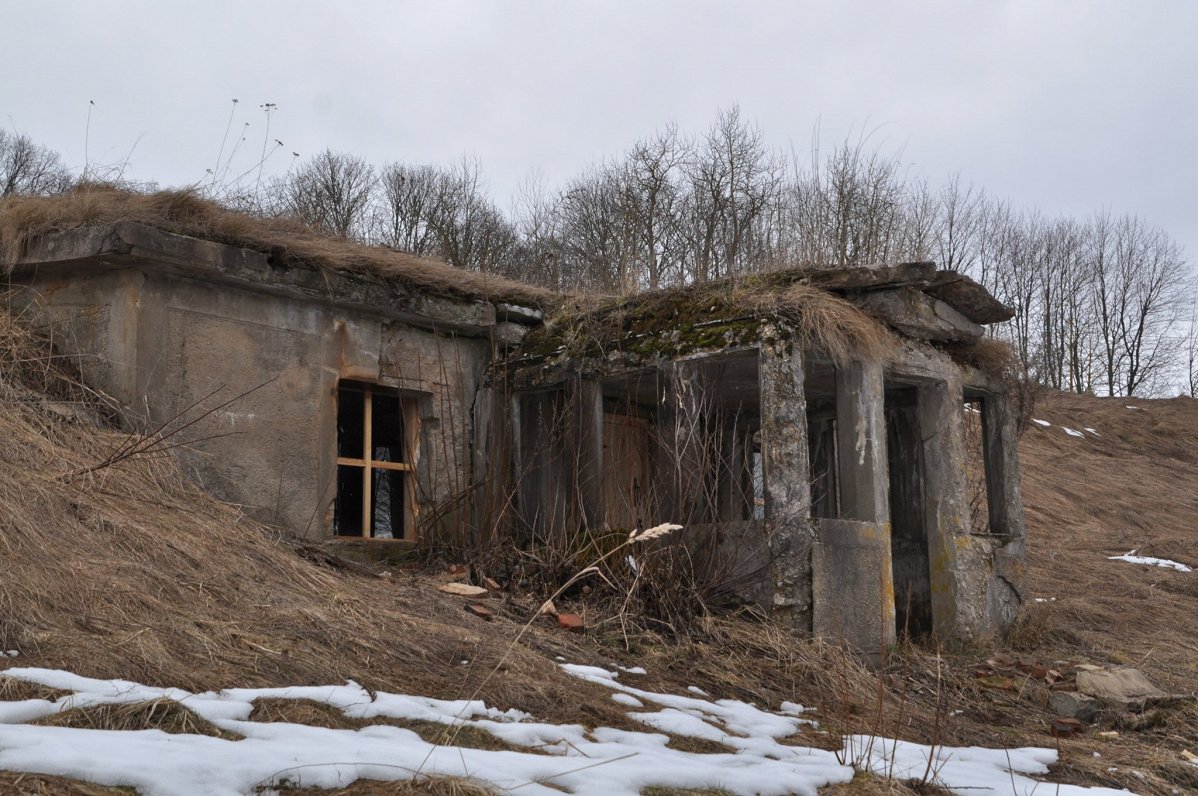New museums on the history of the First World War have been opened in the villages of both municipalities, and a common route of approximately one hundred kilometers has been created, which leads through the bunkers and burial places of combatants. The main idea of the project is to raise awareness about the cruelty and misery of war.

On the Latvian side of the border a First World War Museum has opened its doors in Medumi. Created in two years, it offers an interactive experience.
"To hold weapons, to feel and see how those soldiers died, to feel the atmosphere, and we hope that some will come to the conclusion – war only brings destruction and death," said Miropija Petkune, tour manager of the First World War Museum in Medumi.
During the First World War and its lengthy aftermath in the Baltic states, fierce battles took place in the vicinity of Daugavpils and Zarasi district in Lithuania in 1916, where thousands of soldiers fell.
Medumi area was on the front line, where sometimes the German and Russian lines were only 300-400 meters apart.

Several concrete buildings made by the Germans survive, and one of these bunkers is located literally next to the border with Lithuania in the village of Egypt. This and more than ten other dugouts and trenches have been renovated as part of the cross-border project.
Historian Andris Grīnbergs emphasized that "in terms of bunkers, [Latvia's southern district of] Selija is special, because it is where German-built World War I bunkers have been preserved in many places and each of them is slightly different. For example this bunker, as we can see, has a kind of loggia or porch, which is rare."
Along with the preservation of the military heritage of the First World War, it is also planned to provide themed catering services by creating a battlefield kitchen, create new jobs in the villages, and promote interest in objects on the border.

It will soon be possible to follow the footsteps of the First World War on foot or by bicycle to see the new museums, ancient bunkers and burial places of soldiers in Latvia and Lithuania along a route of approximately one hundred kilometers.
More information about the route, including an interactive map, is available at: www.ww1route.eu


























